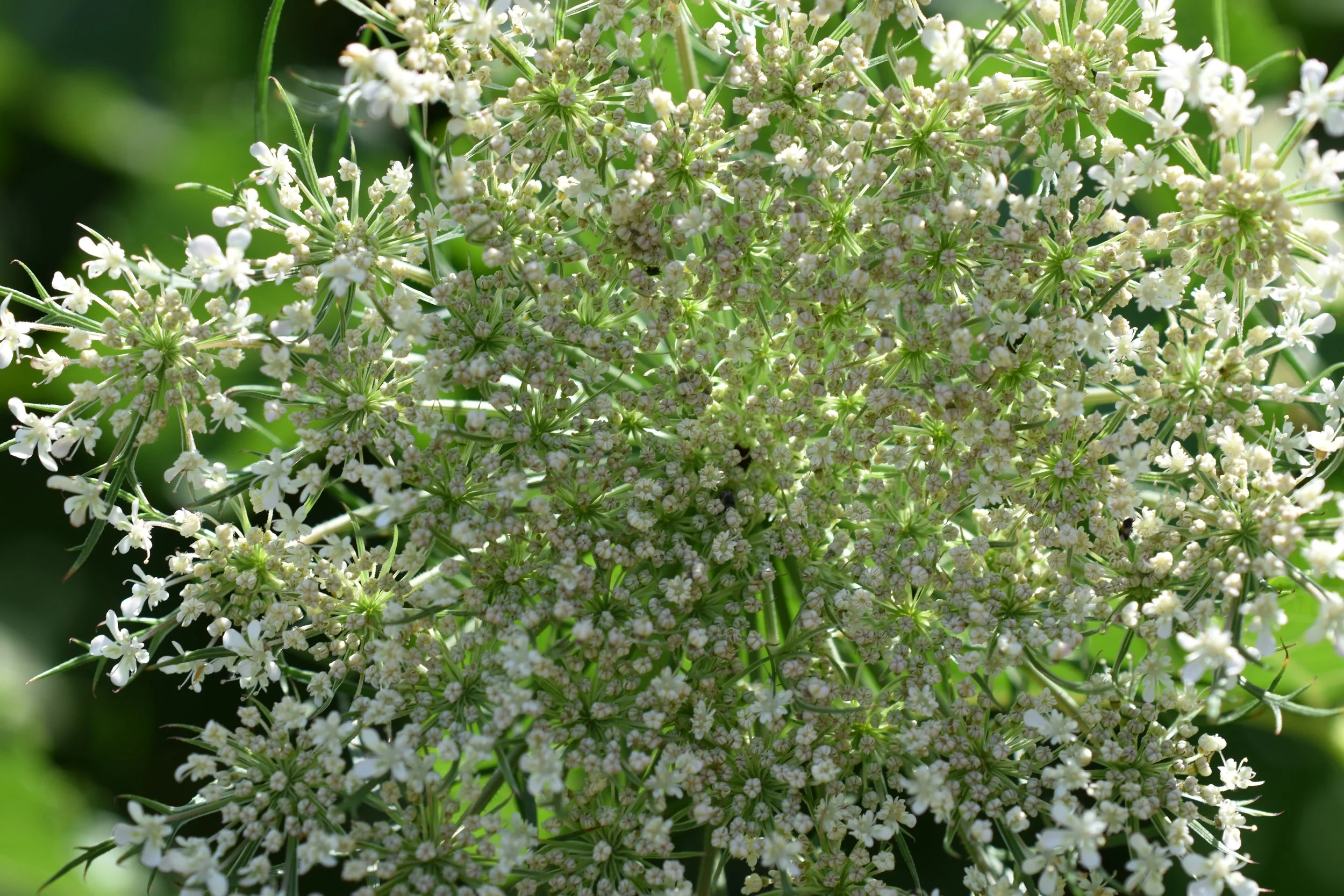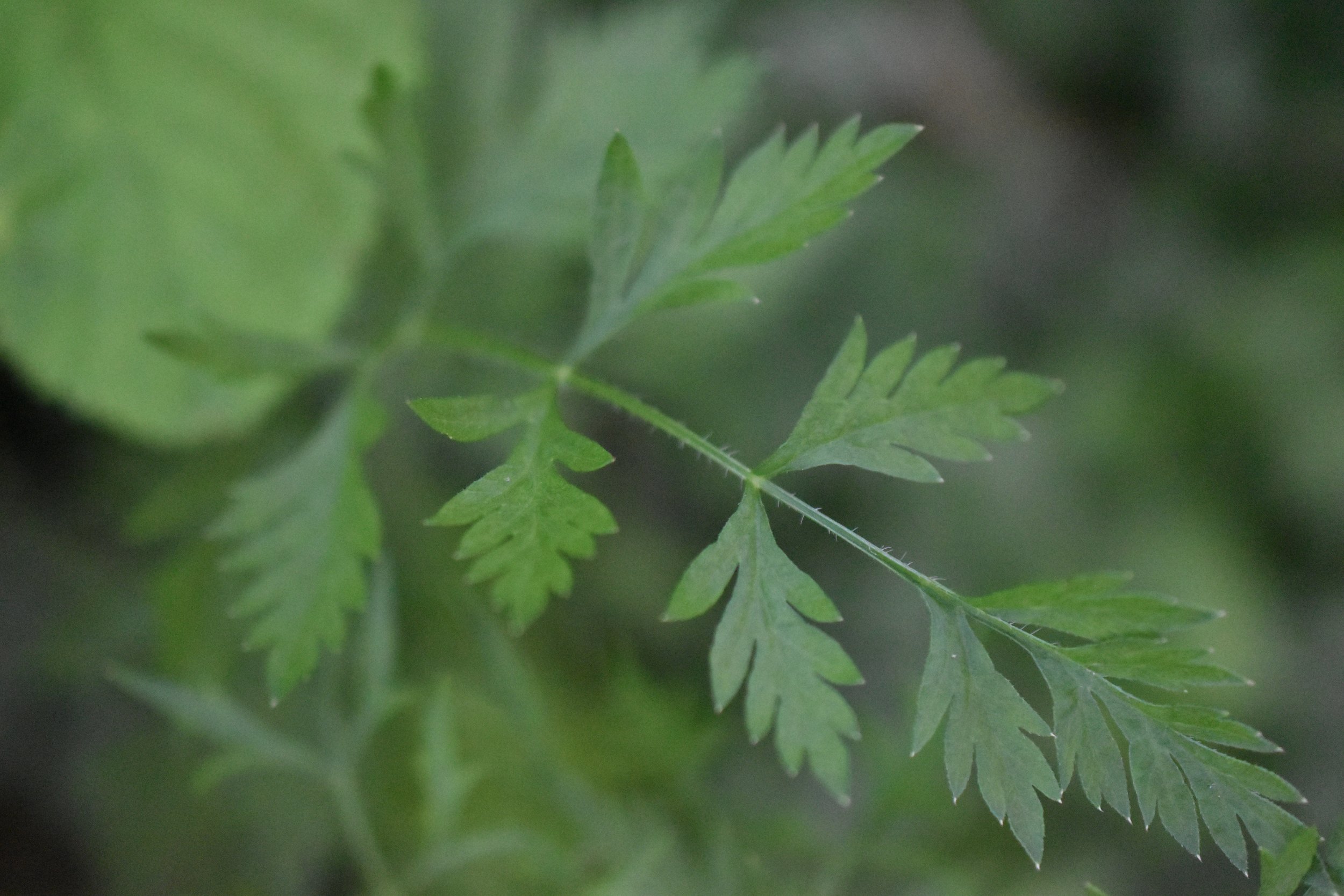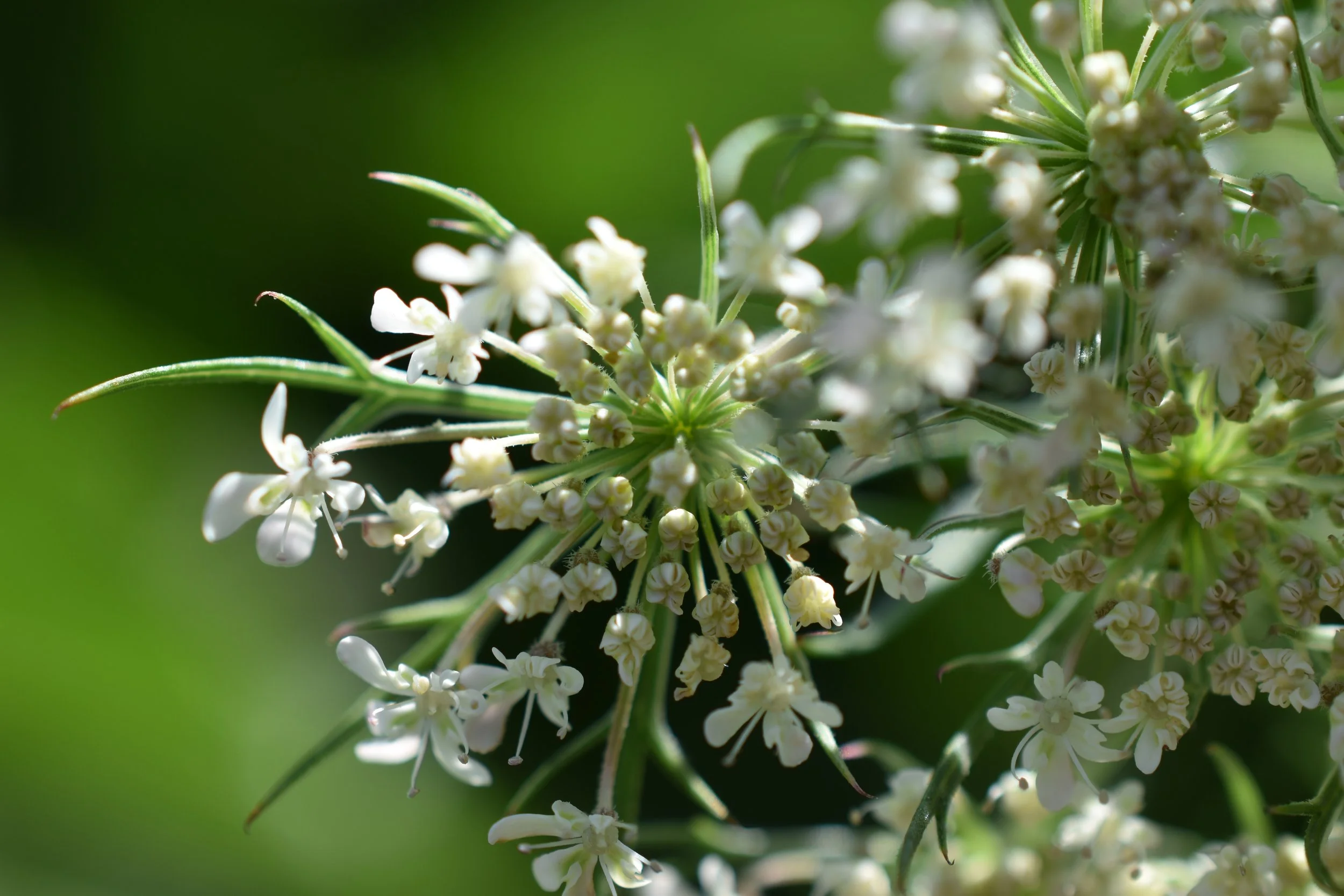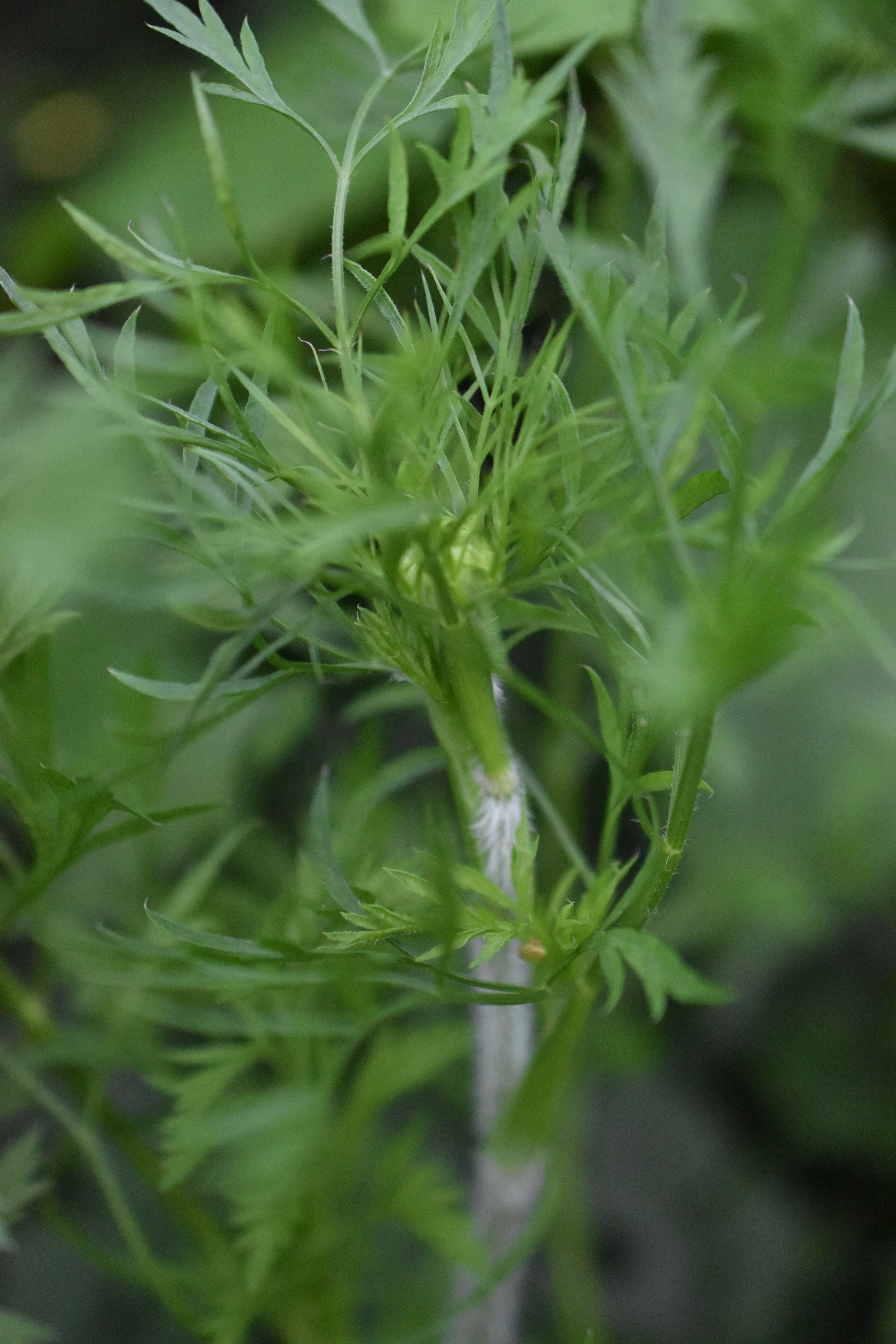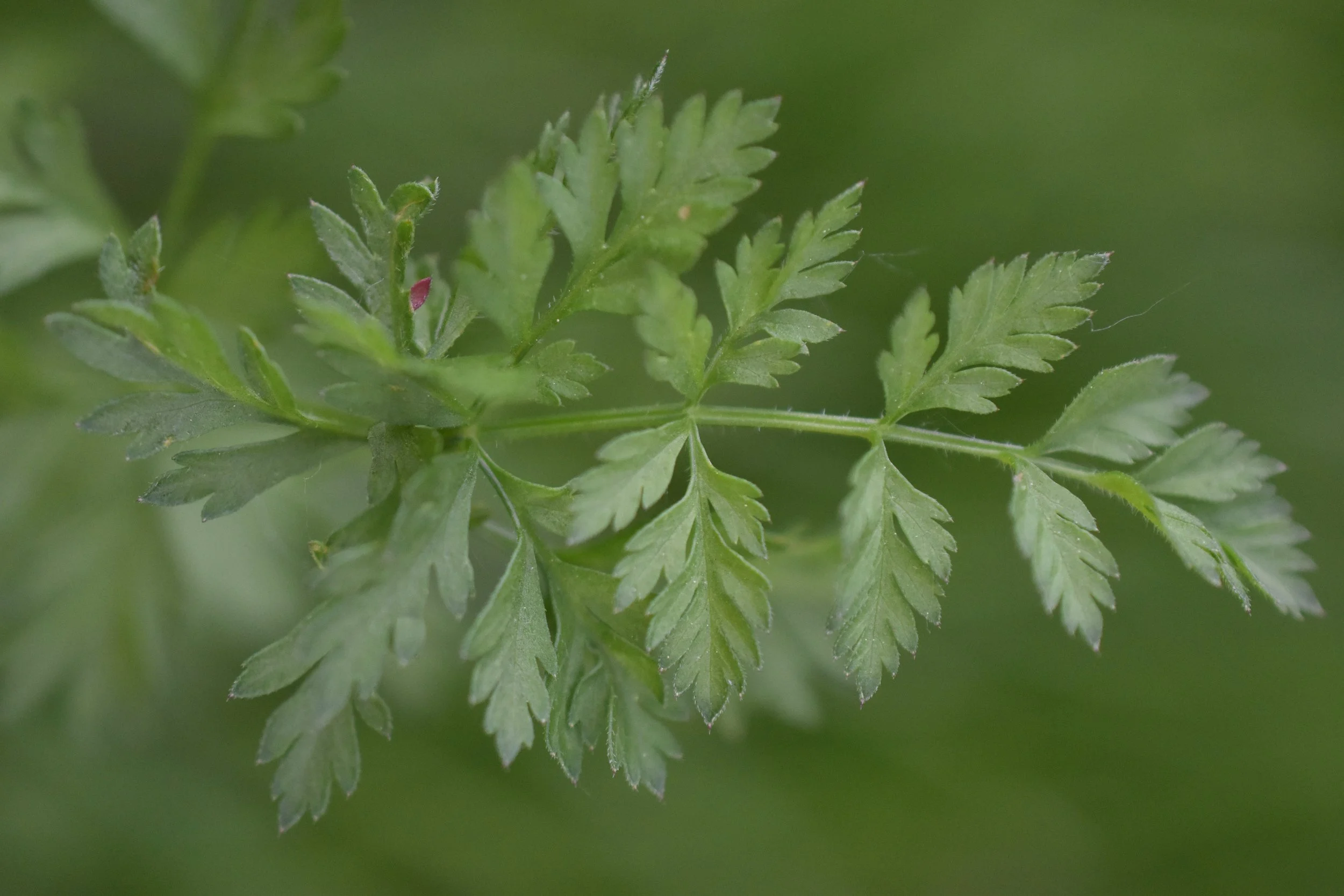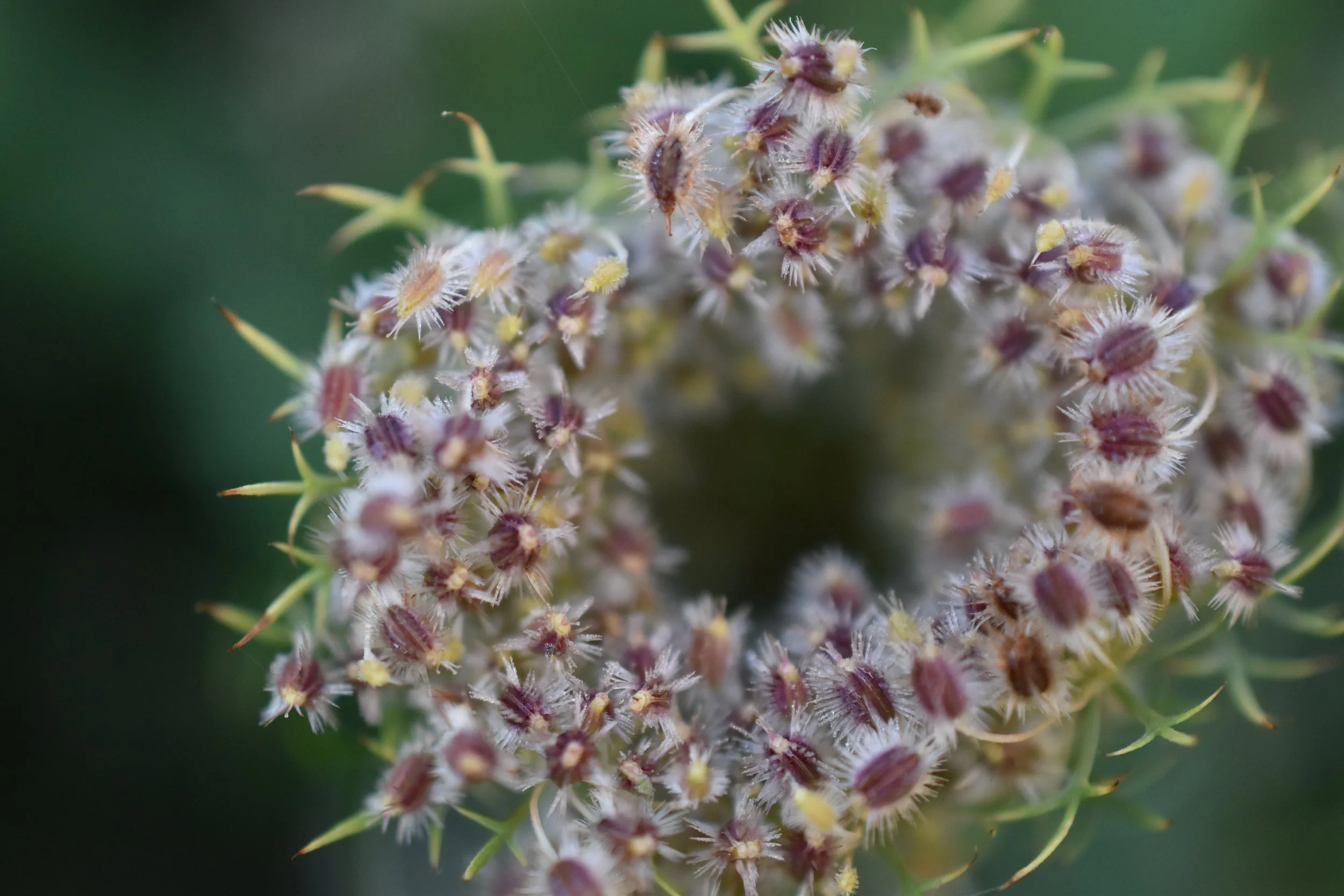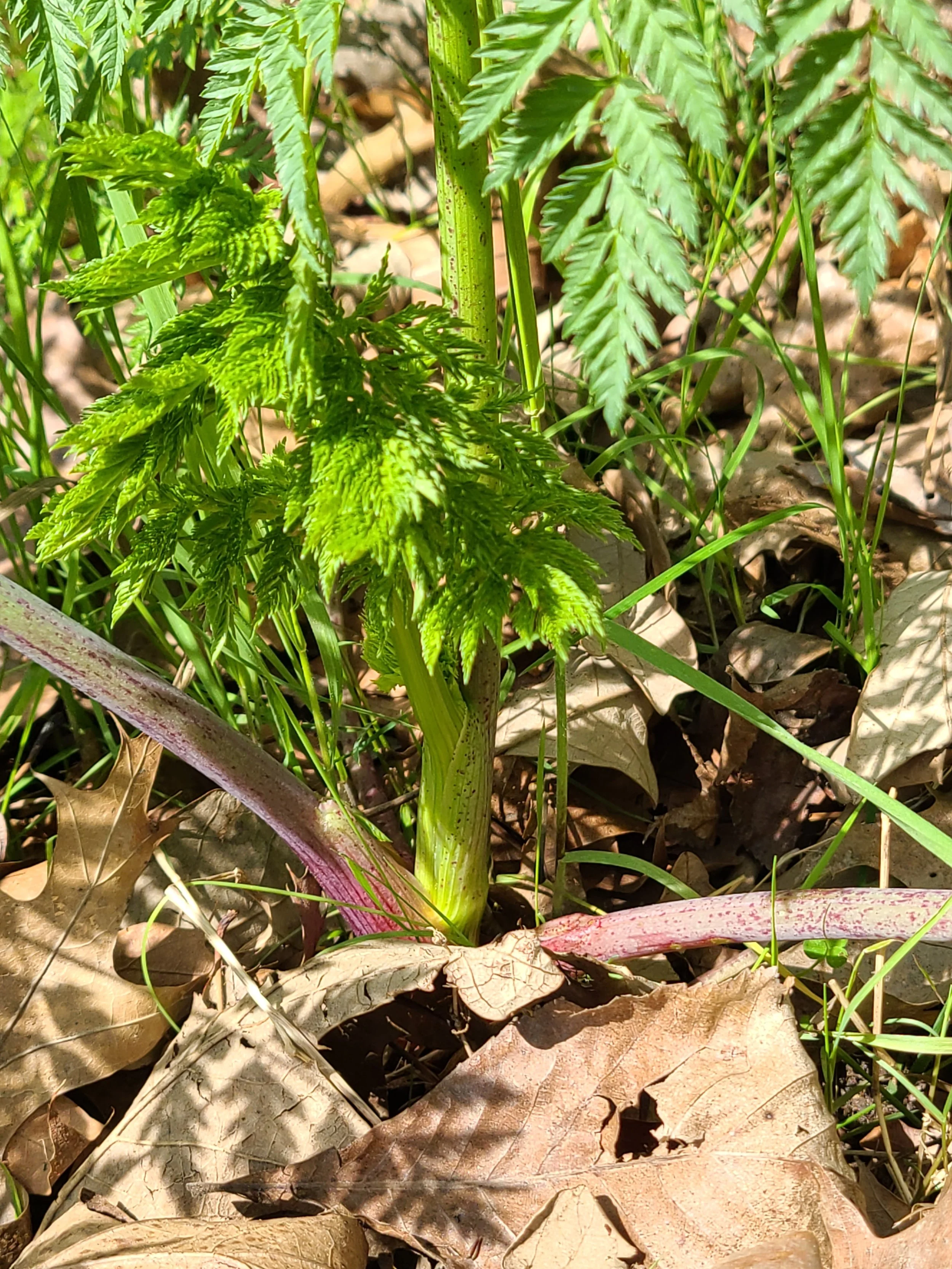Wild Carrot
Daucus carota
Plant Family: Apiaceae
Other common names: Queen Anne’s Lace (QAL), Bird’s Nest
Commonly showing up alongside highways and country roads, wild carrot is one of the most recognizable weedy plants in this part of the world. Sitting with this plant and observing this beauty in her natural state gives a sense of welcoming, warmth, and wonder. Notice all of her teeny, delicate parts: the white flowers, the hairs on her stems, the thin leaves (AKA bracts) underneath the flower head, and the whispy nature of her soft leaves.
Wild carrot is a host plant for Eastern Black Swallowtail butterflies, and her dried up seed head (looks like a bird’s nest) in Autumn becomes a home for many small creatures like spiders - an important ally to have in the Midwest ecosystem!
Though this ally seems sensitive and delicate (maybe even offering too much of herself to others), she holds power. And she reminds us of that power by her unrelenting ability to populate any open field that allows even one seed to mature into full-grown majesty.
Medicinal Virtues & Edible Parts
Energetics — slightly warming, stimulating
Flavors — mildly sweet
Organ/System Affinities — urinary
Ally for — hunger (make fritters with them); edema
Actions — diuretic, nutritive
SEEDS
Actions — diuretic, aromatic, carminitive, nutritive
Ally for — culinary spice (crush them up and add to soups and stews); relieve gas and constipation; edema; increase menstrual flow
Flavors — bitter
Actions — nutritive
Ally for — hunger (chop up and add to salad or eggs)
ROOTS
Clusters of many tiny, individual flowers.
Flowers are displayed in an umbel inflorescence with deeply- and narrowly-lobed bracts underneath the umbel.
Hairy stems.
Compound, pinnate, dissected leaves that alternate up the stem. This is one leaf that contains several leaflets.
Spiky hairs surround each seed.
Seed heads form a “bird’s nest.”
FLOWERS
Energetics — warming, stimulating
Flavors — oily, pungent
Organ/System Affinities — gastrointestinal, digestive, urinary, kidneys
LEAVES
Energetics — cooling, warming
Flavors — bitter, slightly nutty and sweet
Organ/System Affinities — digestive, nutritive
Ally for — microbiome health (prebiotic); hunger (boil and mash up)
Key Identifying Factors
Wild carrot is a biennial perennial that can reach a height of 3-4 feet and displays large clusters of teeny, white flowers that are often mistaken for a single flower; she blooms early Summer through early Autumn; her leaves resemble those of parsley or cultivated carrot; and her stems are hairy. Wild carrots will grow almost anywhere, as long as there is at least part sun.
Toxic Lookalikes
Poison Hemlock
(Conium maculatum)
The main differences from wild carrot include purple splotches on the smooth stems, less dissected leaves, and no bract under the flower umbel.
Water Hemlock
(Cicuta maculata)
The main differences from wild carrot include non-lobed and non-dissected leaves (they are serrated compound leaves instead) and no bract under the flower umbel.
When and How to Harvest
Gather the fresh leaves all season long, and gather the flowers anytime before they go to seed (gather the whole flower head with the stems, not each individual flower). Gather the seeds after the “nest” has turned brown in late Summer/early Autumn. Be sure to check for little critters like spiders who might be using the nest for shelter. For the best tasting roots, gather them from first-year plants by loosening the soil around the base of the plant and digging down deep enough to grab the whole root without breaking it.
Seeds should not be consumed during pregnancy; not safe for long-term, every day use.
Precautions
Because the limited information above came from personal experience of one person, it is highly recommended that you continue learning from other trusted sources. Here are a few places to start!
Other Resources
The Earthwise Herbal: A Complete Guide to Old World Medicinal Plants by Matthew Wood
A Handbook of Native American Herbs: The pocket guide to 125 medicinal plants and their uses by Alma R. Hutchens
Midwest Foraging: 115 wild and flavorful edibles from burdock to wild peach by Lisa M. Rose
American Indian Healing Arts: Herbs, Rituals, and Remedies for Every Season of Life by E. Barrie Kavasch and Karen Baar
Magic and Medicine of Plants by Reader’s Digest
American Herbal Products Association’s Botanical Safety Handbook
Books
Websites & Videos
These statements and claims have not been evaluated by the Food and Drug Administration.
This information is not intended to diagnose, treat, cure, or prevent any disease. For educational purposes only.


